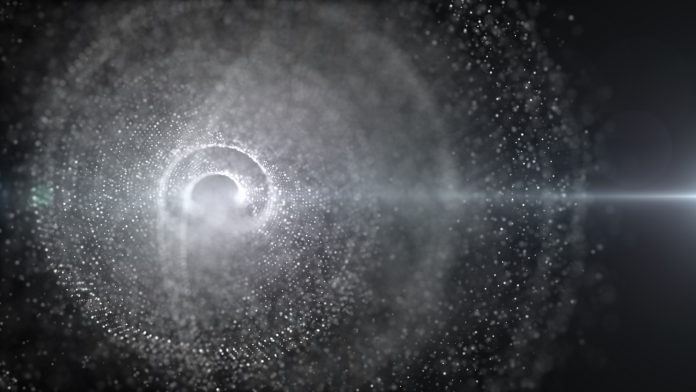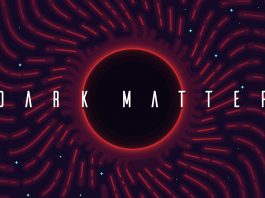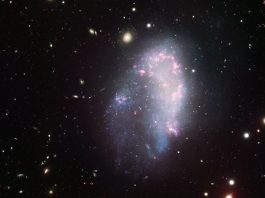An international team of researchers has developed a new model called HYPER that may finally reveal the enigmatic properties of dark matter.
The team, consisting of Robert McGehee and Aaron Pierce of the University of Michigan and Gilly Elor of the Johannes Gutenberg University of Mainz, pioneered the HYPER (HighlY Interactive ParticlE Relics) dark matter model.
The HYPER model suggests that after the formation of dark matter in the early Universe, the strength of its interaction with normal matter sharply increases, which makes it potentially detectable today and may explain its abundance.
The study, ‘Maximizing Direct Detection with Highly Interactive Particle Relic Dark Matter,’ is published in Physical Review Letters.
Why is it so difficult to detect dark matter?
Dark matter is one of the greatest mysteries of modern physics. It is known that it must exist, as without it, the motion of galaxies cannot be explained, and no experiments to date have been able to detect it.
There are currently various proposals for new experiments aiming to detect it directly through its scattering from the constituents of the atomic nuclei of a detection medium, such as protons and neutrons. However, the team’s new HYPER model may present the most promising method to date.
Current efforts to identify heavy dark matter particles – known as WIMPS – have been unsuccessful. Due to this, scientists have been searching for alternative particles, most notably lighter ones. Moreover, phase transitions are expected in the dark sector, as there are several in the light sector, but these have been neglected in previous studies.
Elor commented: “There has not been a consistent model for the mass range that some planned experiments hope to access. However, our HYPER model illustrates that a phase transition can actually help make the dark matter more easily detectable.”
The difficulty for a suitable model is that if darker matter interacts too strongly with normal matter, its amount formed in the early Universe would be too small, contradicting astrophysical observations. Nevertheless, if it is produced in the right amount, the interaction would be too weak to detect with current experiments.
McGehee explained: “Our central idea, which underlies the HYPER model, is that the interaction changes abruptly once—so we can have the best of both worlds: the right amount of dark matter and a large interaction so we might detect it.”
How does the HYPER model work?
In particle physics, interactions are mediated by a specific mediator particle, and the same occurs in the interaction between dark matter and normal matter. Dark matter’s formation and detection both function via this mediator, with the strength of the interaction increasing depending on its mass.
Firstly, the mediator must be heavy enough, so the correct amount of dark matter is formed and later light enough to detect dark matter. The team discovered a phase transition after the formation of dark matter, in which the mediator’s mass suddenly reduced.
Pierce said: “Thus, on the one hand, the amount of dark matter is kept constant, and on the other hand, the interaction is boosted or strengthened in such a way that it should be directly detectable.”
Initially, the team considered the maximum cross-section of the mediator-mediated interaction with the protons and neutrons of an atomic nucleus to align with astrological observations, and certain particle-physics decays. They then considered if there was a model that demonstrated this interaction.
McGehee added: “We came up with the idea of the phase transition. We then calculated the amount of dark matter that exists in the Universe and then simulated the phase transition using our calculations.”
Elor concluded: “The HYPER model of dark matter can cover almost the entire range that the new experiments make accessible. We have to systematically consider and include very many scenarios, for example, asking the question of whether it is really certain that our mediator does not suddenly lead to the formation of new dark matter, which of course, must not be. But ultimately, we were convinced that our HYPER model works.”





